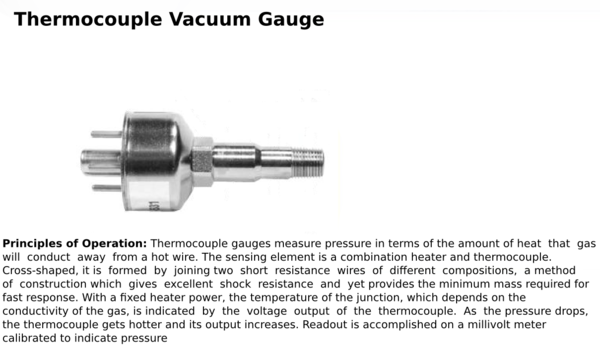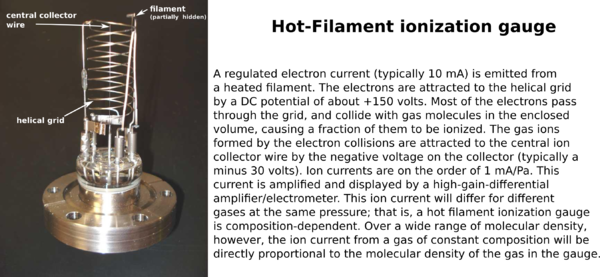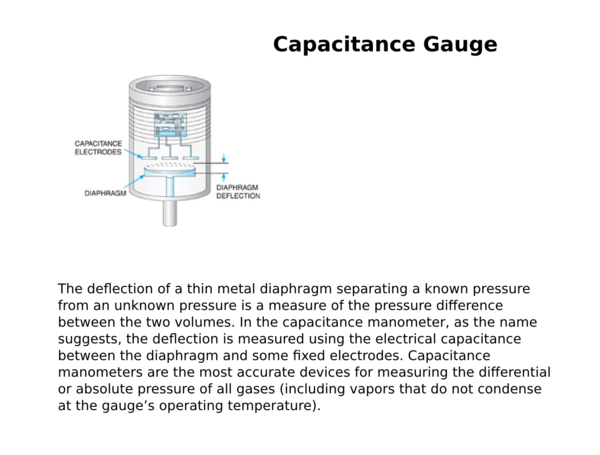From Advanced Projects Lab
|
|
| (5 intermediate revisions by the same user not shown) |
| Line 1: |
Line 1: |
| − | Intro: Pressure sensing technology that we use in the lab mostly revolves around ionic and thermal applications of gas properties. Ion and thermal couple gauges respectively.
| |
| | | | |
| − | Ion Gauges: A filament is charged and produces free electrons. These electrons roam free in the low pressure system until they bombard a gas atom. This bombardment knocks off an electron from the gas atom, creating a cation. This cation is attracted to a collector which completes a circuit between the filament and the collector. This current is measured and is directly related to the density of the remaining gas and subsequently, its pressure. | + | == The Thermocouple Gauge == |
| − | [[File:iongauge.png|200px|thumb|left|alt text] | + | |
| − | Thermocouple Gauge: A heated filament is placed into the low pressure system and allowed to cool. The rate of heat loss is directly related to gas density and subsequently, pressure.
| + | [[File:Tc_gauge.png|600px]] |
| | + | |
| | + | |
| | + | == The Ion Gauge == |
| | + | |
| | + | [[File:Ion_gauge.png|600px]] |
| | + | |
| | + | |
| | + | == The Capacitance Gauge == |
| | + | |
| | + | [[File:Capacitance_gauge.png|600px]] |
| | + | |
| | + | '''Useful Links:''' |
| | + | |
| | + | [http://en.wikipedia.org/wiki/Ultra-high_vacuum| UHV - Wikipedia] |
Latest revision as of 11:51, 7 November 2014
The Thermocouple Gauge

The Ion Gauge

The Capacitance Gauge

Useful Links:
UHV - Wikipedia


